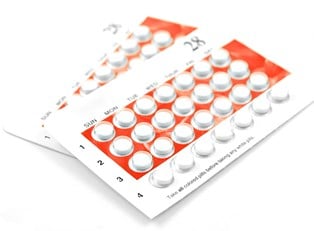Intrauterine devices (or IUDs for short) are increasingly becoming a popular method of birth control. The small T-shaped device is inserted into the uterus and can prevent pregnancy for years at a time. Currently there are two types of IUDs available—hormonal and copper, both of which prevent pregnancy by keeping sperm from successfully fertilizing an egg. If you’re considering an IUD, take a look at some of the pros and cons of these devices so you can decide if it’s a good choice for you.
The Pros of IUDs
One of the most appealing benefits of using an IUD as a form of birth control is its ease. Having the device inserted will require a trip to the doctor, but once that’s done, there is no maintenance required. Because IUDs are a one-time affair, their cost can be drastically lower than other forms of birth control like "the pill," which requires a monthly prescription. The initial cost of the device may be a little high for some people, as most brands cost a few hundred dollars, but over time the IUD will actually save money. Additionally, thanks to new healthcare laws in the United States, some women will find that their health insurance providers cover IUDs at no cost to patients.
As with all birth control, IUDs are not 100% effective at preventing pregnancy. However, these devices have some of the highest success rates of any contraceptive. When using a copper IUD, the failure rate is between .1% and 2.2%. Similarly, the failure rate for hormonal devices is less than 1%. The main reason that IUDs are better at preventing pregnancy than other forms of birth control is due to their ease of use—it’s not possible to incorrectly use the device if it’s been properly inserted by a doctor.
It might seem like having a device implanted in the uterus would be uncomfortable, but according to most women who use them, IUDs are so comfortable that they’re unnoticeable. Some patients experience a sharp pain as the device in inserted, but this sensation often dissipates quickly and does not return.
Finally, IUDs are beneficial because they are so long lasting yet reversible. While exact times vary by brand, most devices can successfully prevent pregnancy for five years or more without needing to be replaced. However, if a woman decides that she wants to conceive during this time, the IUD can be removed and its effects will be negated without any health risks.
The Cons of IUDs
There are several drawbacks that need to be considered before deciding to use an IUD. Most importantly, it should be noted that these devices offer no protection whatsoever from sexually transmitted infections (STIs). Therefore, an IUD should be viewed as only one aspect of a plan for safe sex that should also include barrier-method birth control.
In rare cases, an IUD may be able to become dislodged from its location, which can cause pain or even infection for the patient. Additionally, when an IUD slips out of place, it stops being an effective form of birth control, meaning that accidental pregnancy is possible. However, scenarios like these have drastically decreased as device technology continues to improve.
IUDs may also cause changes to a woman’s menstrual flow. When using a hormonal IUD, this typically means that periods will lighten or even disappear altogether. However, with copper devices, the opposite is frequently true—periods become heavier and longer than usual. This doesn’t pose any immediate health risks, but many would still consider this to be burdensome.
Finally, some women may experience emotional changes that may include depression when using a hormonal IUD, due to the release of synthetic hormones. However, this is a rare side effect and can typically be rectified by switching to a copper IUD.



